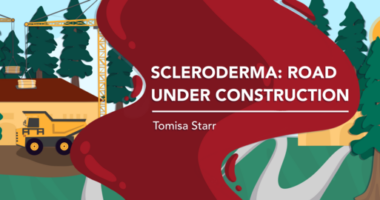Presence of Autoantibodies, Disease Subtype May Indicate Cancer Risk in Scleroderma Patients

The presence of a specific scleroderma subtype and autoantibodies may be reliable factors to identify a distinct cancer risk in patients with scleroderma, according to a large prospective study.
The study, “Autoantibodies and scleroderma phenotype define subgroups at high-risk and low-risk for cancer,” was published in the journal Annals of the Rheumatic Diseases.
Systemic scleroderma, or systemic sclerosis, is a chronic autoimmune disease — when the body mistakenly identifies its own tissues as foreign, then produces autoantibodies against them. The disease is usually divided into two subtypes: limited scleroderma and diffuse scleroderma.
While limited scleroderma — the most common form — affects few areas of the skin and progresses slowly, diffuse scleroderma affects extensive areas of the skin as well as internal organs, progresses faster, and has more severe symptoms.
Patients with systemic sclerosis are known to have an increased risk of cancer compared with the general population.
Several studies have shown that patients with autoantibodies against RNA polymerase III (Pol III) — a key enzyme for the normal functioning of cells — carry a higher risk of cancer at the onset of scleroderma. The tumors of these patients were found to produce a mutated version of this enzyme, which is thought to trigger an immune response against it.
And patients who lack a group of autoantibodies known as CTP were associated with a higher risk of cancer within a short time of the onset of scleroderma.
To understand whether a specific autoantibody and scleroderma subtypes are associated with a distinct cancer risk, researchers at Johns Hopkins University School of Medicine analyzed the data of 2,383 patients from the Johns Hopkins Scleroderma Center.
Patients’ mean age at the onset of the disease was 42.4 years, 83% of them were women, and 60% were diagnosed with limited scleroderma. Autoantibody data was only available for 1,712 patients, and 8.6% of all patients (205 out of 2,383) had a cancer diagnosis.
Overall and site-specific cancer incidence was calculated for scleroderma patients with distinct autoantibodies and disease subtypes, and compared with a representative sample of the U.S. population, from the Surveillance, Epidemiology and End Results registry.
Looking at the risk of cancer within three years of the onset of scleroderma — “cancer-associated scleroderma” — patients with diffuse scleroderma had a 56% increased risk compared with the general population.
This increase was seen especially in people with diffuse scleroderma and autoantibodies against RNA Pol III; they had a significant, threefold higher risk of cancer-associated scleroderma, and a fivefold higher risk of breast cancer.
Those with the same type of autoantibodies but with limited scleroderma showed an increased risk of lung cancer.
Patients with limited scleroderma and no CTP autoantibodies were associated with a significantly higher risk of cancer at disease onset, particularly breast cancer and melanoma.
A lower risk of cancer development throughout life was found in patients with limited scleroderma and — to the team’s surprise — in patients with limited scleroderma and antibodies against a specialized structure of chromosomes called centromere.
Researchers believe the development of cancer may be influenced by different immune responses, and that centromere autoantibodies may suppress the emergence of cancer, while this suppression may not be completely efficient with RNA Pol III autoantibodies.
“These data suggest that autoantibodies could be useful tools for cancer risk stratification to maximize detection of cancer through enhanced screening of high-risk groups, while minimizing the harms and costs from overscreening,” researchers wrote.
Additional studies on the reasons for these differences may increase our understanding regarding scleroderma and the potential associations between autoimmunity and cancer.






